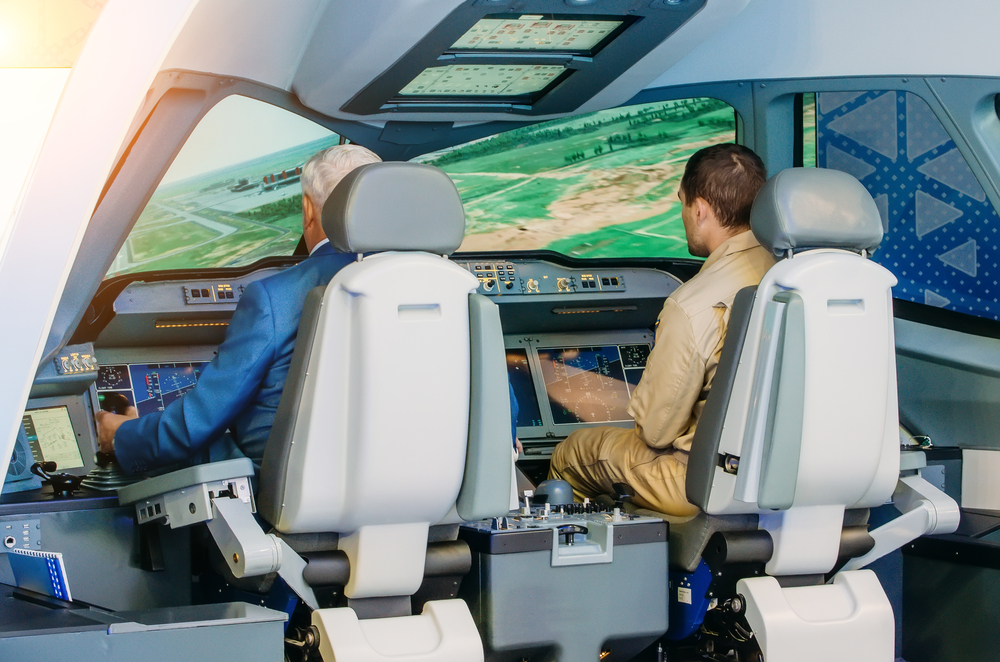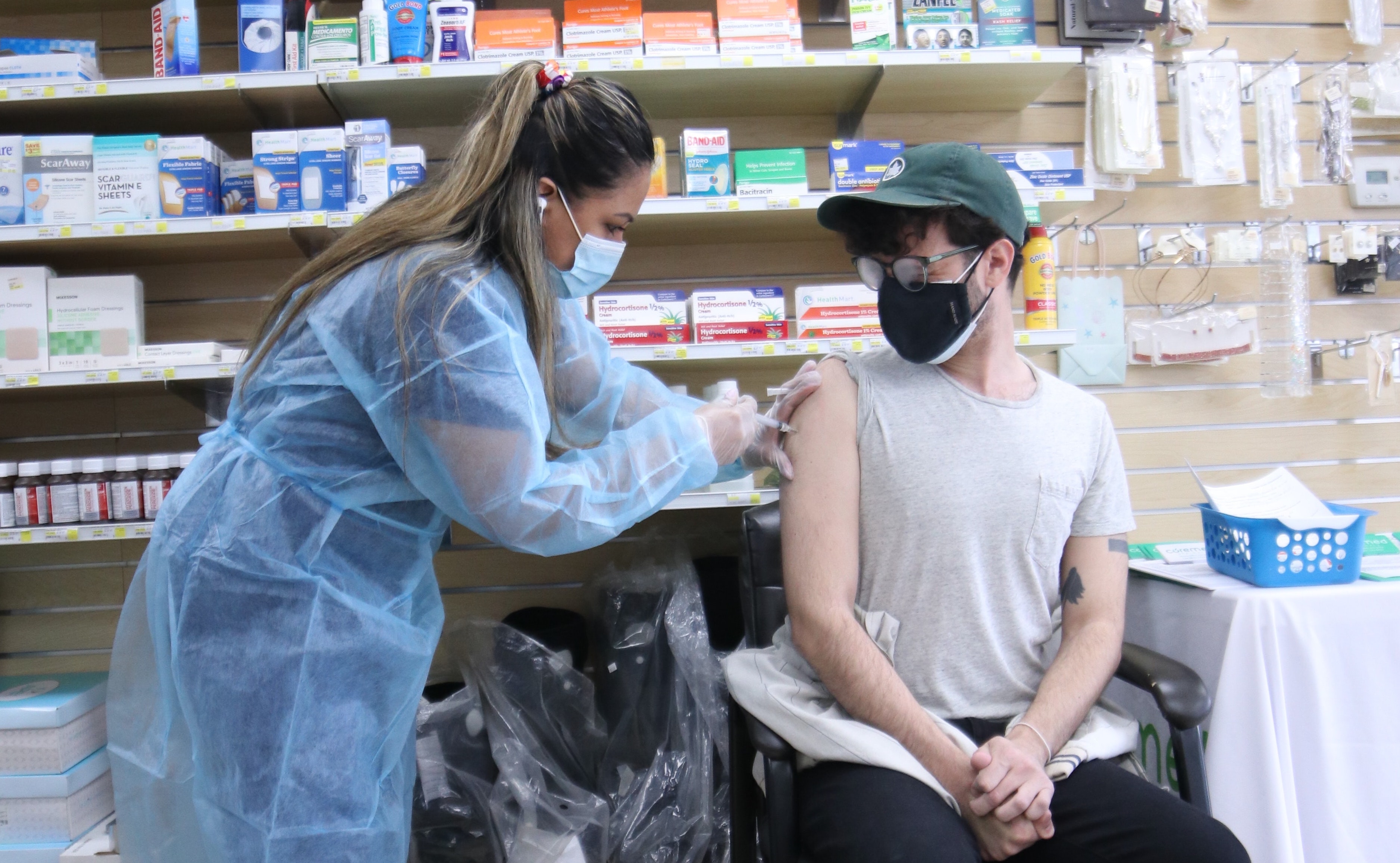A pilot in command of a commercial airliner confronts the unexpected, such as a sudden mechanical failure requiring a system override or another aircraft in the same airspace. Immediately, the pilot and co-pilot must make critical decisions and take action.
Split-second responses in high stakes, life-or-death scenarios require intensive training—not only in aviation, but also in healthcare, military and defense, transportation, cybersecurity, manufacturing, and other fields. Simulators are frequently used to provide specific training and build experience in real-world scenarios, while also developing psychomotor skills (both gross motor and fine motor). This training is further enhanced by advanced e-learning—ideally, adaptive learning—to build knowledge and enhance retention. Combined, it is a blended learning solution at the intersection of adaptive learning and simulators.
In other fields, a blended approach speaks to the combination of in-classroom instruction and computer-based adaptive learning. This type of blended environment has been shown to be highly effective in education and workforce training. Our discussion here focuses on blended solutions that combine adaptive learning with simulators that provide a full-immersion experience.
In aviation, simulators replicate the look of the airplane cockpit and the feel of handling the aircraft. Adaptive learning is a complementary approach, delivering personalized instruction in operations and safety protocols while also building 21st century skills of critical thinking, communication, collaboration, and creativity. Such blended instruction is imperative for pilots and crews and is increasingly being used for ground personnel, as well as for jobs across multiple industries where safety is paramount, and error-prevention can save the lives.
Aviation in the Spotlight
Aviation training, in particular, has been in the spotlight recently following two crashes of Boeing 737 Max aircraft, one operated by Lion Air and the other by Ethiopian Airlines. The 737 Max fleet has been grounded subject to design changes and upgrades by Boeing and recertification by the Federal Aviation Administration (FAA). In the midst of the FAA investigation, the effectiveness of pilot training has been questioned. According to the New York Times, simulators used to train pilots on the 737 Max failed to replicate the physical force needed to control the aircraft in emergencies. As a result, pilots reportedly were not equipped with the necessary knowledge and preparation in the event of malfunctions.
The Allied Pilots Association has complained that traditional computer-based training, alone, will “not provide a level of confidence for pilots to feel not only comfortable flying the [737 Max] aircraft but also relaying that confidence to the traveling public.” Pilots have called for more in-depth simulator training, including with scenarios experienced by the pilots in the two air crashes.
In other news reports, Boeing CEO Dennis Muilenburg also commented on the need “to earn and re-earn the trust of the flying public.” In addition to explaining upgrades and design changes to enhance safety of the 737 Max, another message to the public might be greater emphasis on extensive training of pilots and crews using state-of-the-art instruction.
Blending Training Solutions
Beyond any specific issues with the 737 Max and the tragedy of two airplane crashes, it’s important to understand the potential benefits of blended training solutions in aviation. Simulators are used for routine flight operations as well as emergency responses. Adaptive learning delivers personalized instruction tailored to the needs of each learner. Using a questions-first approach, advanced adaptive learning platforms determine what each learner has mastered and where there are specific knowledge gaps that need to be addressed with precision.
One example of where adaptive learning is being used more broadly in aviation is for flight operations training, such as to improve crew scheduling for greater efficiency and cost savings. When technology is upgraded or a new system is rolled out, adaptive learning can help workers get up to speed quickly. Learners spend time only on those areas in which they need development, while skipping over what they have already mastered, thus reducing the time it takes to reach proficiency. Further, instruction presented with spaced repetition helps maintain knowledge over time. As we have seen among early adopters of adaptive learning in a variety of industries, time savings in reaching proficiency of as much as 50% are common, compared to traditional e-learning or instructor-led training.
Blended Training for Healthcare, Defense, and More
Across multiple industries, simulators and adaptive learning provide a complementary approach to building knowledge, skills, and experiences, particularly in high-pressure situations. In healthcare, students, doctors, nurses, EMTs, and other clinicians use simulators to gain experience with certain patient procedures. Simulators also help build fine motor skills, such as for doctors or nurses inserting an IV. Computer-based adaptive learning further builds knowledge and competence, by uncovering gaps and the need for additional instruction in a way that is supportive and nonjudgmental. NEJM Knowledge+, an award-winning adaptive learning platform developed by NEJM Group and Area9, has been shown to improve the first-time passing rate on board certification exams (ABIM-CE) by a statistically significant amount compared to the national average (95% vs 86%).
Blended instruction, combining the personalization of adaptive learning with the real-world experiences replicated by simulators, has numerous applications in military and defense, cybersecurity, transportation and sophisticated manufacturing. Virtual reality and augmented reality can be used in simulation to immerse learners in a particular operating environment, including with the intensity, sense of danger, and need for automatic responses.
As technology advances, one mode of learning will not suffice. The stakes are being raised continuously for better training to ensure workers are equipped with the knowledge and skills needed to adapt to and thrive in the fourth industrial revolution. The combination of state-of-the-art simulators and advanced adaptive learning platforms will help ensure professionals gain the knowledge and skills they need to perform their jobs with competence and confidence.









